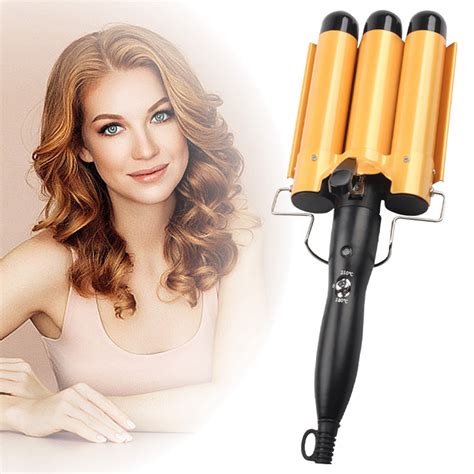Understanding Hair Color Basics
Hair color is determined by two types of pigments: melanin and carotene. Melanin is the pigment that gives hair its brown, black, or red color. Carotene is the pigment that gives hair its yellow or orange color. The amount and type of melanin in your hair determines your natural hair color.

Hair Color Terminology
- Hue: The primary color of your hair, such as brown, black, red, or blonde.
- Tone: The shade of your hair, such as light brown, dark blonde, or auburn.
- Saturation: The intensity of your hair color, such as vibrant red or muted blonde.
- Warm: Hair colors with red, orange, or yellow undertones.
- Cool: Hair colors with blue, purple, or green undertones.
Popular Hair Color Options
There are countless hair color options available, but here are some of the most popular:
- Blonde: Hair that is light in color, ranging from platinum to golden.
- Brunette: Hair that is brown in color, ranging from light brown to dark brown.
- Red: Hair that is red in color, ranging from copper to burgundy.
- Black: Hair that is very dark brown or black in color.
- Ombre: A hair color technique that creates a gradual transition from one color to another.
- Balayage: A hair color technique that involves hand-painting highlights onto the hair.
- Foils: A hair color technique that involves wrapping sections of hair in aluminum foil and applying bleach or color.
Choosing the Right Hair Color for You
When choosing a hair color, it is important to consider your skin tone, eye color, and personal style. Here are some tips:
- Fair skin: Choose warm hair colors, such as blonde or light brown.
- Medium skin: Choose warm or cool hair colors, such as medium brown or red.
- Dark skin: Choose deep hair colors, such as dark brown or black.
- Light eyes: Choose warm hair colors, such as golden blonde or copper red.
- Dark eyes: Choose cool hair colors, such as platinum blonde or dark brown.
- Consider your personal style: If you have a bold personality, you may want to try a bright hair color, such as fiery red or electric blue. If you have a more conservative style, you may want to stick with a natural hair color or a subtle highlight.
Hair Color Trends 2023
Here are some of the hottest hair color trends for 2023:
- Copper: A warm, reddish-brown hair color that is perfect for fall.
- Caramel: A warm, golden-brown hair color that is perfect for winter.
- Ash blonde: A cool, gray-blonde hair color that is perfect for spring.
- Strawberry blonde: A warm, reddish-blonde hair color that is perfect for summer.
- Brown balayage: A hair color technique that creates a gradual transition from dark brown to light brown.
- Platinum blonde: A cool, very light blonde hair color that is perfect for making a statement.
Hair Color Maintenance
Maintaining your hair color is essential for keeping it looking its best. Here are some tips:
- Use color-protecting shampoo and conditioner.
- Avoid washing your hair too frequently.
- Use a heat protectant spray when styling your hair.
- Get regular trims to remove split ends.
- Touch up your roots as needed.
Pain Points of Hair Coloring
- Dry and damaged hair
- Hair breakage
- Fading hair color
- Allergic reactions to hair dye
- Time-consuming and expensive process
Tips and Tricks for Healthy Hair Coloring
- Do a patch test before using any new hair color product.
- Follow the instructions on the hair color product carefully.
- Use a deep conditioner after coloring your hair.
- Limit the use of heat styling tools.
- Get regular trims to remove split ends.
Benefits of Hair Coloring
- Express your personality and style
- Enhance your natural features
- Cover up gray hair
- Correct color mistakes
- Boost your confidence
Table 1: Hair Color Trends by Season
| Season | Hair Color Trends |
|---|---|
| Spring | Ash blonde, strawberry blonde |
| Summer | Caramel, copper, strawberry blonde |
| Fall | Copper, burgundy, auburn |
| Winter | Caramel, dark brown, black |
Table 2: Hair Color Options by Skin Tone
| Skin Tone | Hair Color Options |
|---|---|
| Fair | Warm: blonde, light brown |
| Medium | Warm: medium brown, red |
| Dark | Warm: dark brown, black |
Table 3: Pain Points of Hair Coloring
| Pain Point | Solution |
|---|---|
| Dry and damaged hair | Use a deep conditioner after coloring your hair. |
| Hair breakage | Limit the use of heat styling tools. |
| Fading hair color | Use color-protecting shampoo and conditioner. |
| Allergic reactions to hair dye | Do a patch test before using any new hair color product. |
| Time-consuming and expensive process | Find a hair colorist who offers affordable prices and flexible scheduling. |
Table 4: Benefits of Hair Coloring
| Benefit | Motivation |
|---|---|
| Express your personality and style | Desire to stand out, be unique |
| Enhance your natural features | Desire to accentuate your eyes, skin, or bone structure |
| Cover up gray hair | Desire to look younger, more professional |
| Correct color mistakes | Desire to fix a bad hair color job |
| Boost your confidence | Desire to feel more beautiful, more confident |
